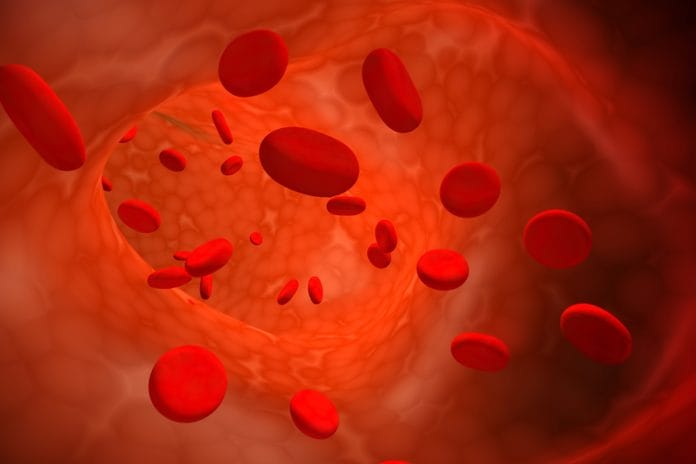Every cell in the human body contains iron. Yet, there are only about 4 grams (less than a teaspoon) present in the entire body. Iron’s main role is to transport oxygen throughout the body, and it’s a key player in energy metabolism.2
While liver (with or without onions) may remain the poster-child for iron, other foods such as meats, egg yolk, enriched grains, and green leafy vegetables all contribute significant amounts. Unfortunately, much of the iron we consume is not absorbed. As such, iron is one of the most difficult nutrients to obtain in the American diet.2 As the leading nutrient deficiency in both developed and developing countries, iron-deficiency anemia continues to be a global health concern and affects approximately 3 million Americans.1,2
The dental hygienist may be uniquely positioned to be the first practitioner to detect anemia since oral symptoms may be some of the earliest signs to appear. Another factor to consider is that most dental patients see their hygienist on a three-, four-, or six-month schedule, while they may see their physician on a much less frequent basis. Also, symptoms of anemia can appear gradually and often go unnoticed by the patient or are dismissed as factors related to a busy lifestyle.
Who’s at Risk for Iron-Deficiency?
Those most susceptible to iron deficiencies are infants, children, teens, and women who may be pregnant, or nursing—but anyone can become deficient.2 Iron-deficiency can be caused by a variety of factors. The most common reasons include inadequate intake, inadequate absorption, increased demand, increased loss through diarrhea or blood. Even long-term antacid therapy can result in iron-deficiency anemia.2
How harmful is iron-deficiency anemia? Anemia may have lasting consequences. It’s been linked to a higher risk of preterm delivery and low-birthweight babies. A nutrition textbook states, “Infant iron status has been associated with cognitive and neurobehavioral outcomes, indicating the importance of optimal iron status at birth.”2 Women who are anemic may also be more susceptible to postpartum depression.2
Not all forms of iron are created equal. Heme sources of iron are provided by meat sources containing hemoglobin and are more readily absorbed and utilized by the body. Non-heme sources include eggs, milk, and plants. If non-heme sources are combined with heme sources of iron, absorption doubles. Additionally, vitamin C enhances the absorption of iron, whereas calcium inhibits the absorption of iron.2
What about vegans? Iron requirements may double for vegans because they are consuming the non-heme form.2
What to Watch for With Patients
Clinically, anemia may present as gingival and mucosal pallor, with or without angular cheilosis.2 Follow-up questions can rule out anything that might have otherwise cracked the labial commissures such as acne medication or extreme weather. Pallor of the conjunctivae can be detected by gently retracting the lower eyelid. This normally vascular area may have a whitish or pale pink appearance.
Atrophic glossitis is another sign. You might detect that the fungiform and filiform papillae have started to atrophy, starting at the tip and lateral borders of the tongue, spreading towards the dorsal surface. Gradually, as the papillae shrink, the tongue may have bald patches, or it may appear red, smooth, and shiny.2 It’s not uncommon for the tongue to be sore or have a burning sensation.2
Physically, a patient might report feeling lethargic or overly exhausted. Ask if your patient feels unusually winded after going up a set of stairs. Tachycardia is reported in some cases of anemia. Oral candidiasis and other frequent infections might also be linked to iron deficiency. In addition, aphthous ulcers and xerostomia can be associated with iron-deficiency anemia and affects food intake.2
One unusual behavior associated with iron-deficiency is pica, which is described as the abnormal craving and consumption of nonfood substances. Depending on the substance—dirt, clay, chalk, stones, paint chips—it can result in lead poisoning or tooth wear.2
Performing a thorough intraoral exam on every patient and asking questions are the best ways to screen for any nutrient deficiency, including iron deficiency anemia. Assessing patients’ dietary intake will also provide possible clues.
Confirming Iron-Deficiency Anemia
What if I suspect iron-deficiency anemia in my patient? A blood test is the only way to confirm iron-deficiency anemia. Therefore, a referral to a general practitioner is recommended.
Also, the Dental Hygienist’s Guide to Nutritional Care notes, “Despite the prevalence of iron-deficiency anemia, supplements are not recommended without laboratory testing to indicate a deficiency.”2
However, we can and should consider nutritional counseling as part of our care. Evaluating a patient’s diet and making food recommendations is simple, safe, and usually appreciated.
Food choices high in iron might include oysters, chuck roast, chicken liver, and turkey. Other options are lentils, kidney beans, raisins, or any fortified cereal or enriched bread.
Choosing heme sources over non-heme sources has better bioavailability. However, we don’t want to exclude non-heme food sources from our diets. Those foods typically provide other critical components such as fiber and vitamins. Combine heme and non-heme sources to increase the absorption of iron. Eating a wide variety of foods over a long period of time is the best way to get all the appropriate nutrients.
Documentation of Iron-Deficiency Anemia
Lastly, document any signs or symptoms you and the patient discuss during the appointment, along with any recommendations or referrals. Plan to follow up at an appropriate interval.
In conclusion, iron-deficiency anemia is extremely common, and often goes unnoticed or can reoccur in individuals who are susceptible. Hygienists can alert patients to the possibility of iron-deficiency anemia by being vigilant during intra- and extraoral exams, along with follow-up questions.
Now Listen to the Today’s RDH Dental Hygiene Podcast Below:
References
- www.hematology.org
- Stegman, C., and Davis, J.R. (2019) The Dental Hygienist’s Guide to Nutritional Care. Elsevier. 5th edition.












